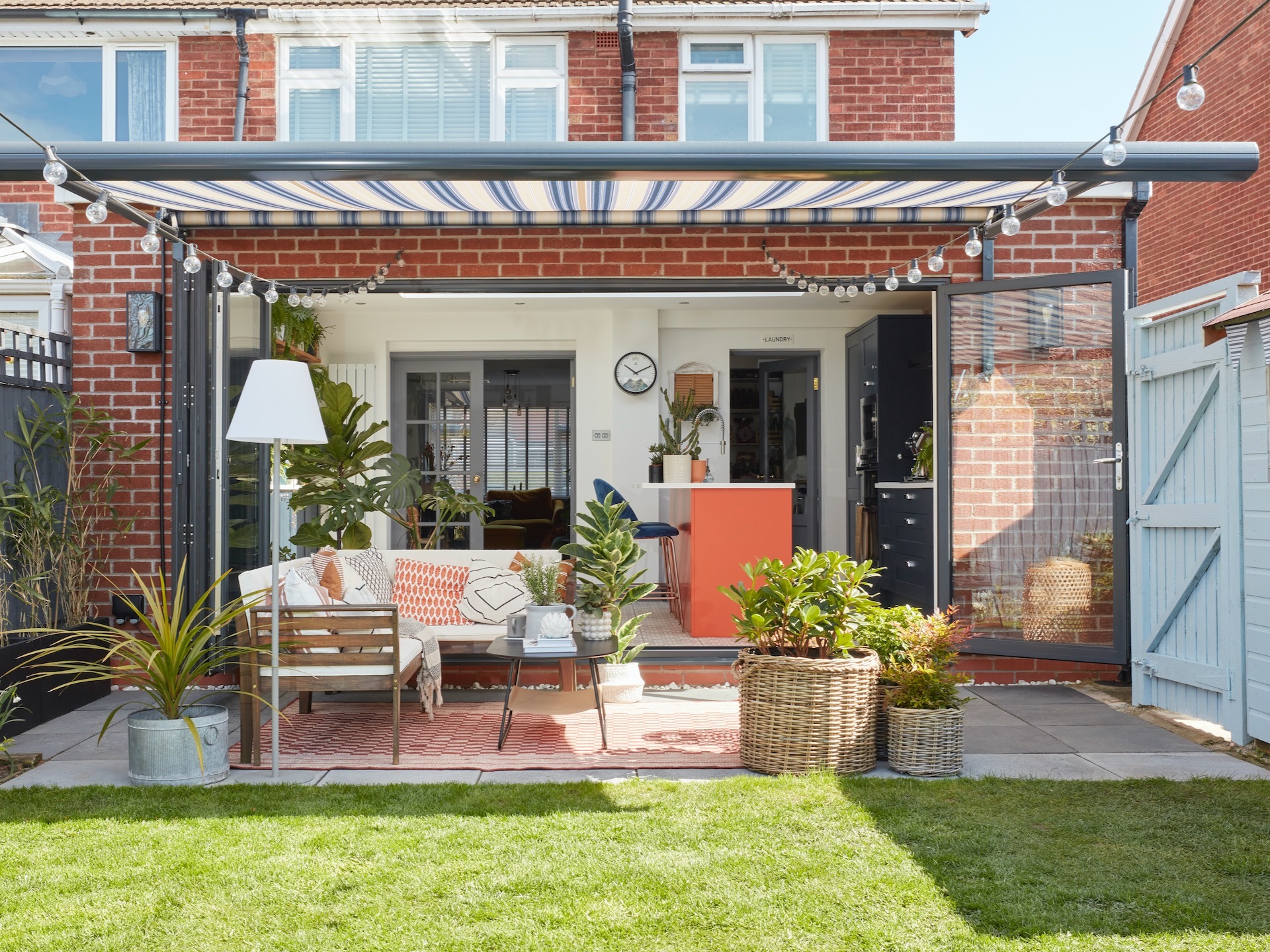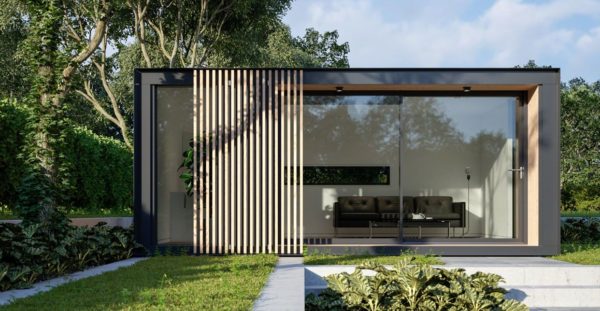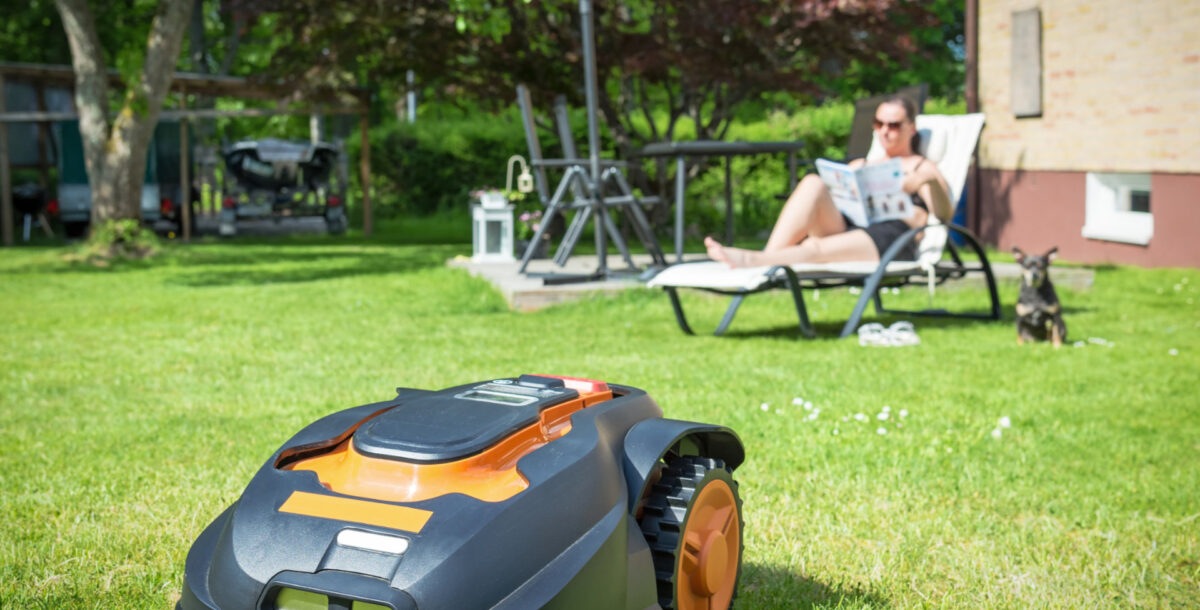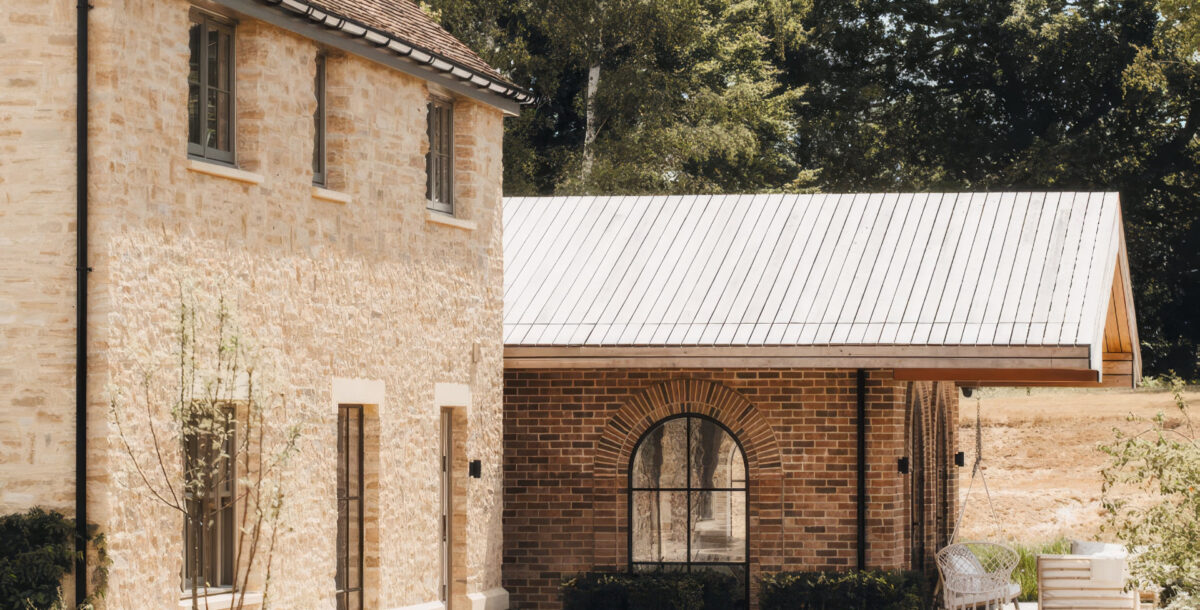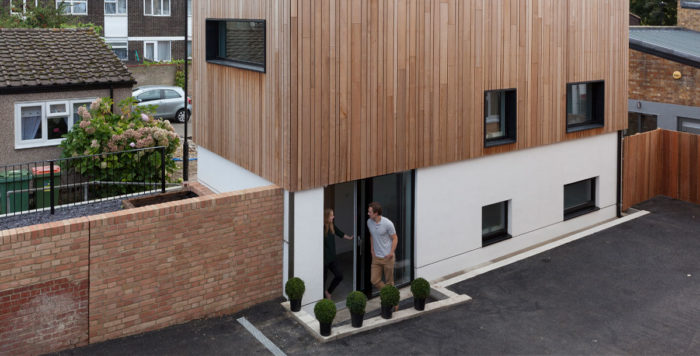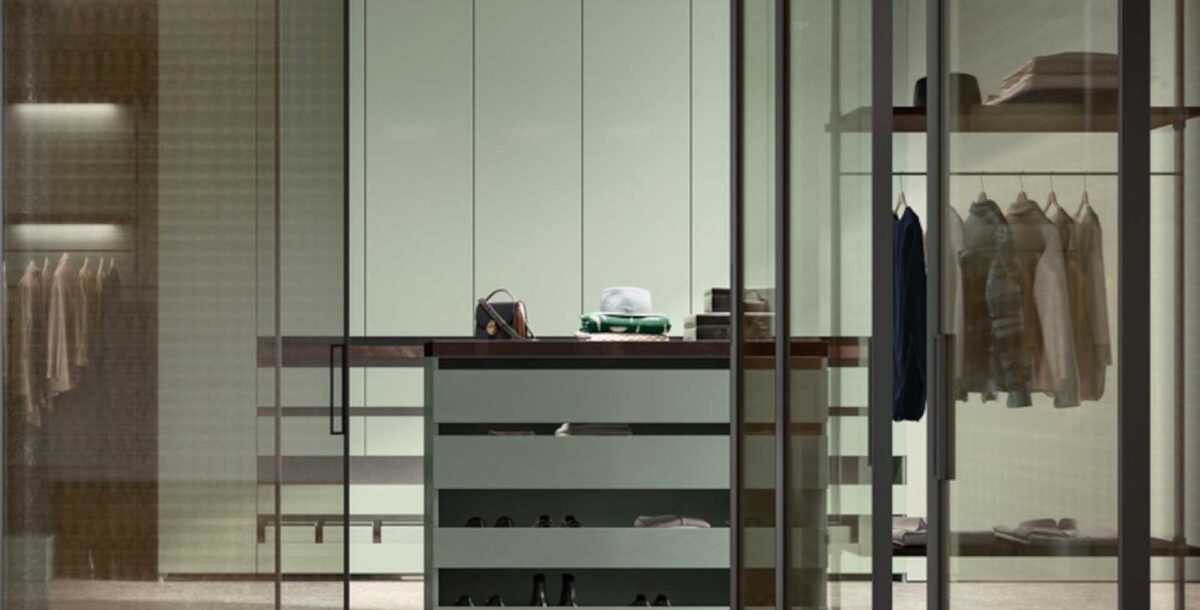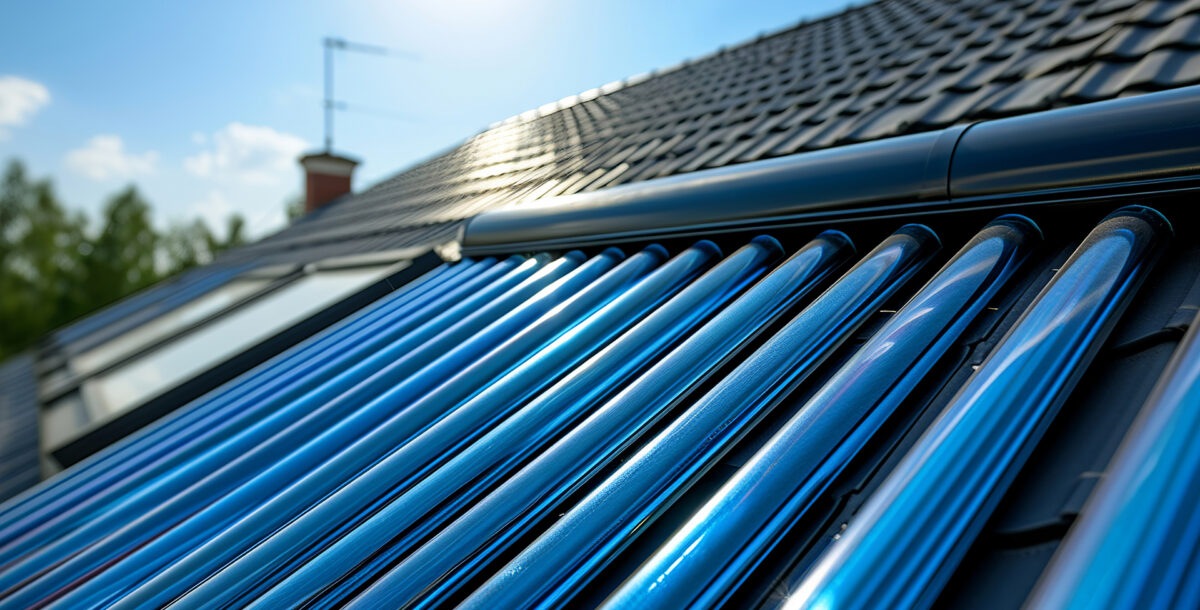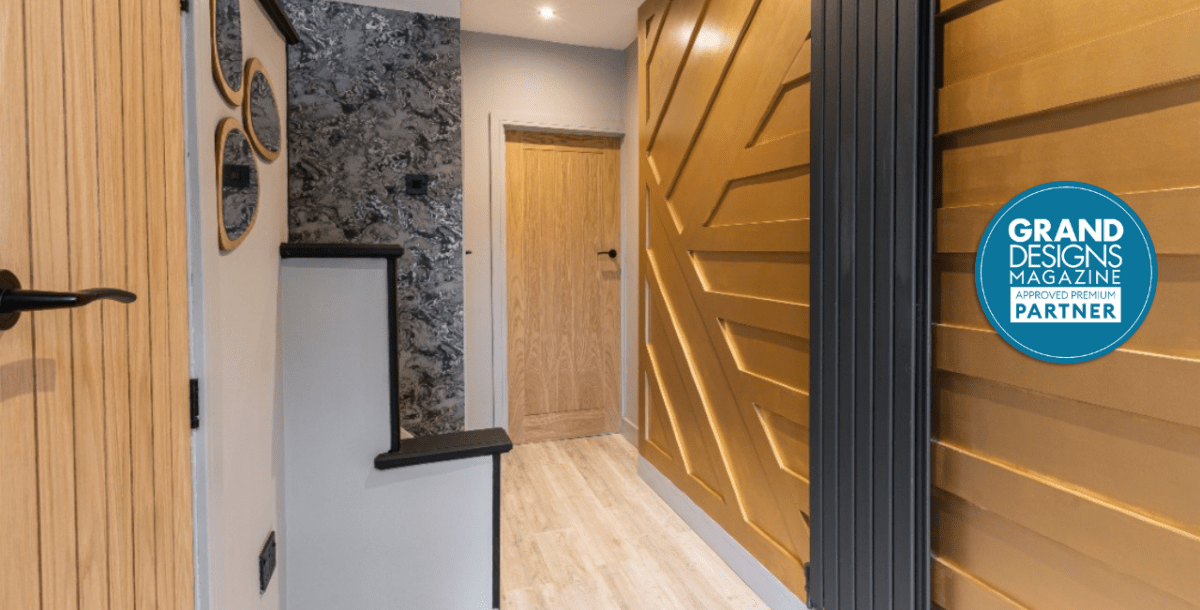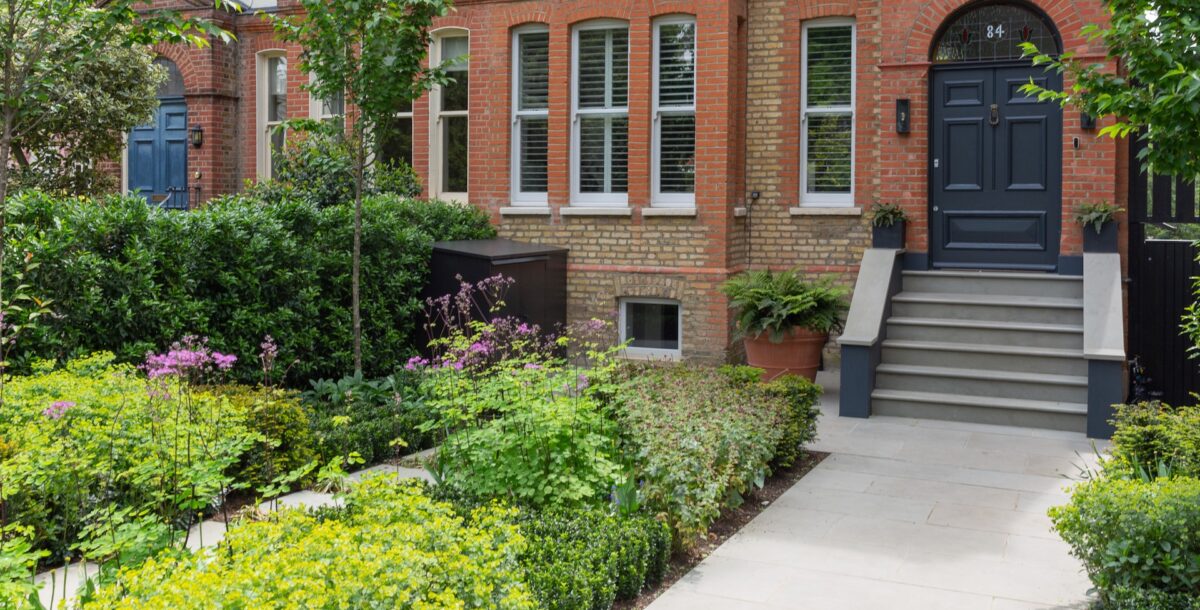Feeling the heat? Ways to keep a house cool in summer
These solutions will improve airflow and keep temperatures comfortable indoors in hot weather
Typically, we spend all winter trying to keep are homes as warm and well insulated as possible. But when summer comes around and a heatwave strikes, our cosy homes can suddenly become unbearably hot, leaving us desperate to find ways to keep a house cool as quickly as possible.
One of the key pressure points in our homes on a hot day is glazing. “Sunlight carries invisible infrared rays that heat objects they touch,” says Abi Clewley, product expert at Thomas Sanderson. “Glass lets this heat in, but struggles to release it back out. So your room acts like a greenhouse, trapping heat and making you miserable. That’s why beating the summer heat is all about controlling sunlight entering your home.”
For this reason, many of our solutions will address windows and doors – but that’s not to say there aren’t other culprits. Poor insulation and ventilation can also be major causes of overheating. And there are even natural ways you can lower the temperature – for example, did you know houseplants can help cool you down? We’ll touch on all this and more as we run through the best ways to keep a house cool in summer
1. Invest in new glazing
A home filled with natural light is a good thing for many reasons – it can lift our mood, energy levels and productivity, not to mention save on the cost of powering light bulbs. But large expanses of glass can also create a sweltering greenhouse effect in summer. Picking the right glazing can therefore be the difference between thriving in the sun’s rays and wilting in them.
“If your main concern is keeping your home cool during the warmer seasons, double glazing is the perfect solution for this,” says Rachael Munby, chief marketing officer at Anglian Home Improvements. “Double glazed windows come with two panes of glass and one insulating layer of gas. This gas prevents warm air from escaping while the double glazing prevents heat from transferring from one side to the other. This means that in hot weather, it limits the amount of heat from the outdoors coming in and in winter it prevents heat from escaping out of the property.”
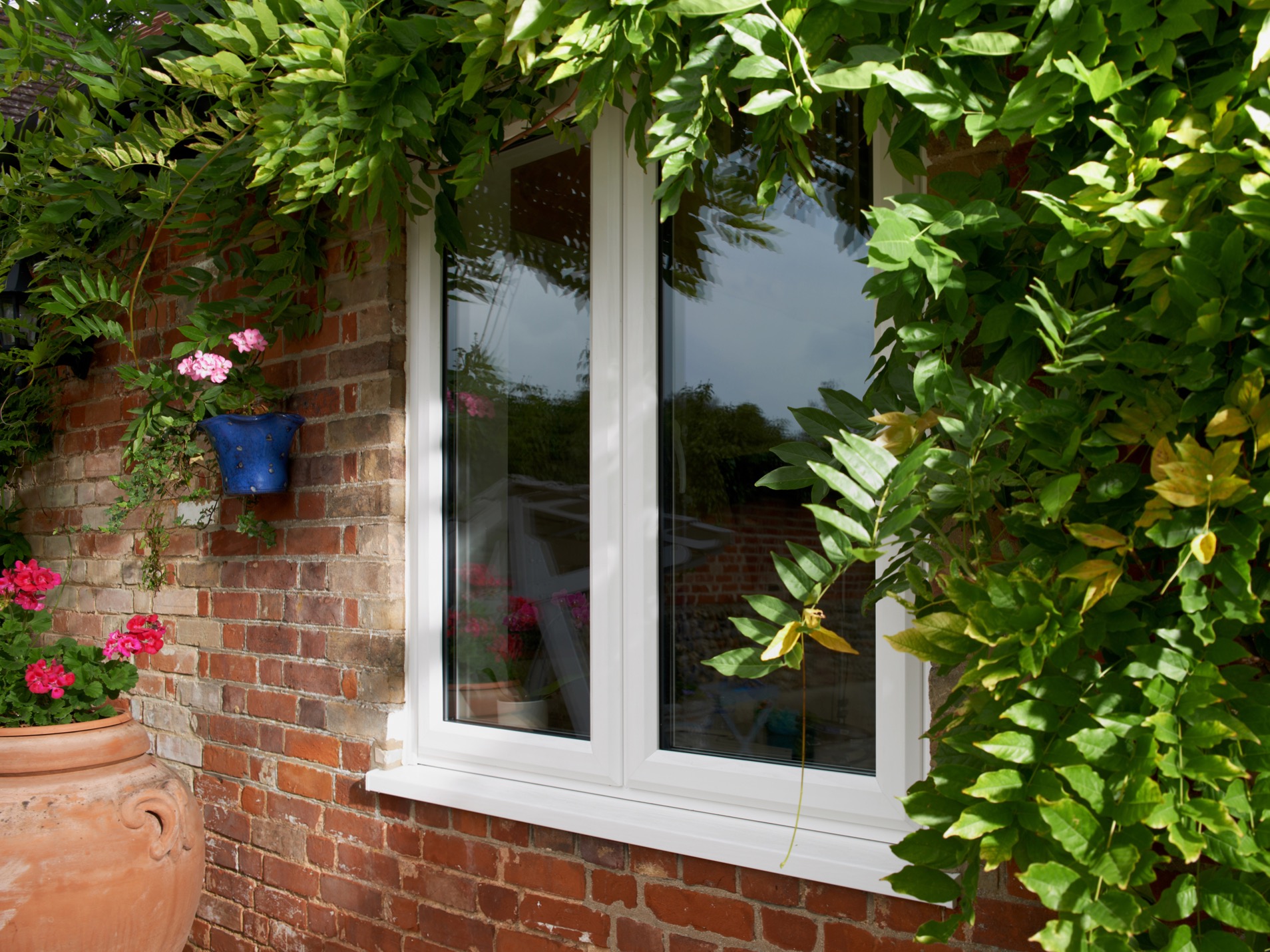
Image credit: Anglian Home Improvements
And interestingly, double glazing may actually be a better option than triple glazing if you’re worried about soaring temperatures. “Triple glazing has significant benefits – notably, high energy efficiency ratings and outside sound reduction,” says Munby. “However, it’s incredibly effective at keeping heat in, which isn’t always the best in the summer months. With that in mind it’s best to mix and match your windows, opting for double-glazed windows in naturally warmer south-facing and west-facing rooms, and using triple glazing in the more shaded north or east-facing rooms.”
Window manufacturers including Anglian offer double and triple glazed windows in the same style. So if you have a room with windows on two different elevations, you can easily select double or triple glazed window combinations without compromising on the look of the exterior.
“To guide you on how much of the sun’s heat will pass directly through the glass, absorb, and radiate into your room, windows have what’s called a G-Value, otherwise known as the Solar Factor,” adds Munby. “The value is a number between 0 and 1, where 1 means your window lets in all the sun’s heat and 0 means it blocks it out. Some windows and glass block the sun’s heat by design. The idea is that allowing some, not all, of the sun’s heat into your room means it is warmer in the winter but doesn’t get too warm in summer.”
Top tip: also try low-e glass
Another standard to look out for is low-e glass, which features a microscopic coating that reflects heat rather than absorbing it. This both serves to keep your home warm in winter by bouncing heat back into the room, but also keeps your house cooler in summer by reflecting solar thermal energy from outside. Just note that low-e glass can make a room feel duller, as it can diminish the brightness of natural light, so always ask to see samples before you invest.
2. Fit exterior blinds
If you’ve ever slept in an attic bedroom on a warm evening, you’ll know their potential to turn into an oven. The same goes for kitchen extensions with roof lights – too much sun can quickly leave you hot and bothered. And while internal blinds can provide some relief, exterior blinds are a far more effective way to keep a house cool, as they stop the sun’s rays before they’ve entered your home.
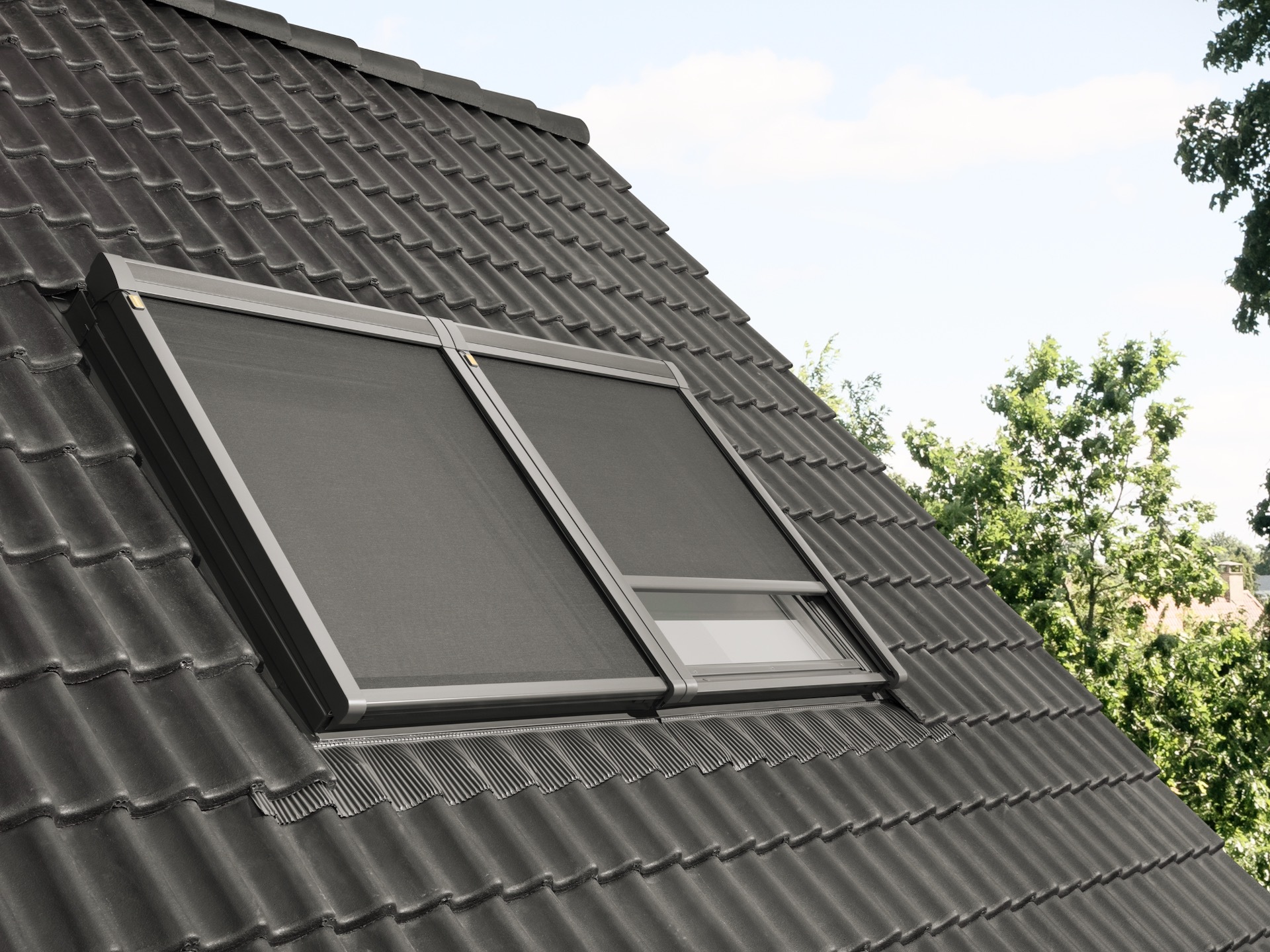
Image credit: Velux
The ultimate option is an external anti-heat blackout shutter made from plastic louvres, which block any heat from outside before it can even reach the window glass. They will also complete blackout when rolled all the way down and protect against noise form hail or rain, so they’re ideal for a loft bedroom. Velux has smart automated options that are electrical or solar powered, and can be upgraded to work with an app control so they can be opened or closed on a timer and based on weather reports.
Alternatively, you could consider external blackout blinds, or translucent external anti-heat blinds, which will prevent overheating while maintaining the view outside and allowing daylight to come in.
3. Choose hi-tech internal blinds
“Last summer we experienced 40°C temperatures, which meant that for many people, areas of the home with large amounts of glass became out of bounds and too uncomfortable to spend time in,” says Victoria Robinson, product manager at Hillarys, who suggests pleated blinds to remedy the issue “Thermashade blinds are made from a specialist fabric that reflects the sun’s rays right back out of the window. They can be made to fit almost any shape or size of glazing, so your gorgeous glass roof won’t miss out.”
“We advise keeping your windows and blinds closed during the day and open them after sunset as the air cools,” she adds.
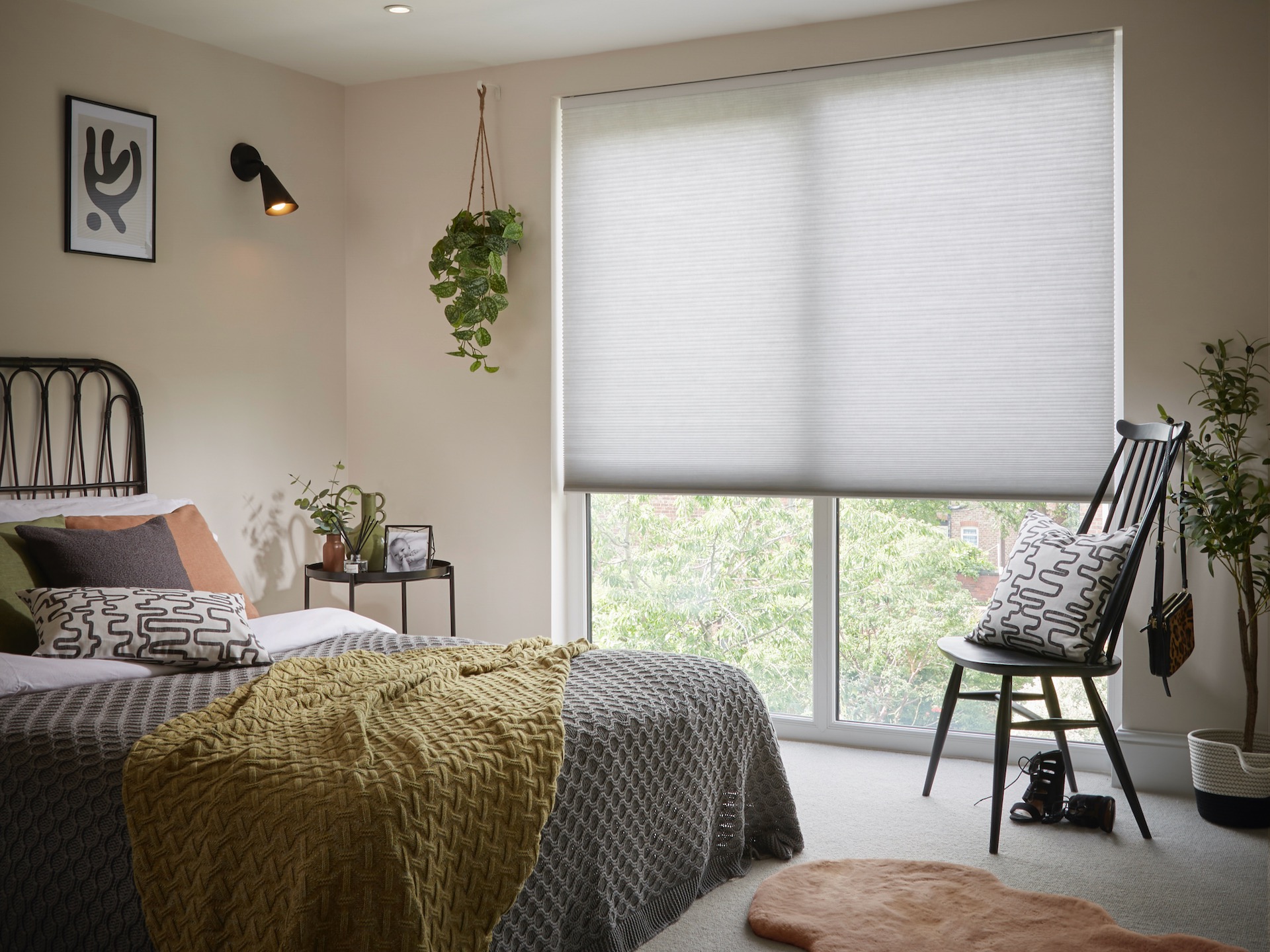
These innovative pleated blinds from Hillarys are designed to trap warm air to regulate room temperature 365 days a year.
Hillarys isn’t the only one to offer this technology. Thomas Sanderson, for example, has Duette blinds. Their honeycomb design traps warm air in summer and keeps precious heat in during winter, to prevent a room becoming too hot or too cold. They can be motorised so they’re easier to open and shut, and you can even set them to automatically close in the middle of the day when it’s hottest, so you won’t come back to a stifling house.
4. Attach an awning
Bi-fold or sliding doors are a great way to connect your interior space to the garden, but they offer another opportunity for heat to build up in your home. Choosing low-e glass is one way to combat the issue, but if you don’t want to compromise the light levels in your home on cooler days, an awning could be more practical.
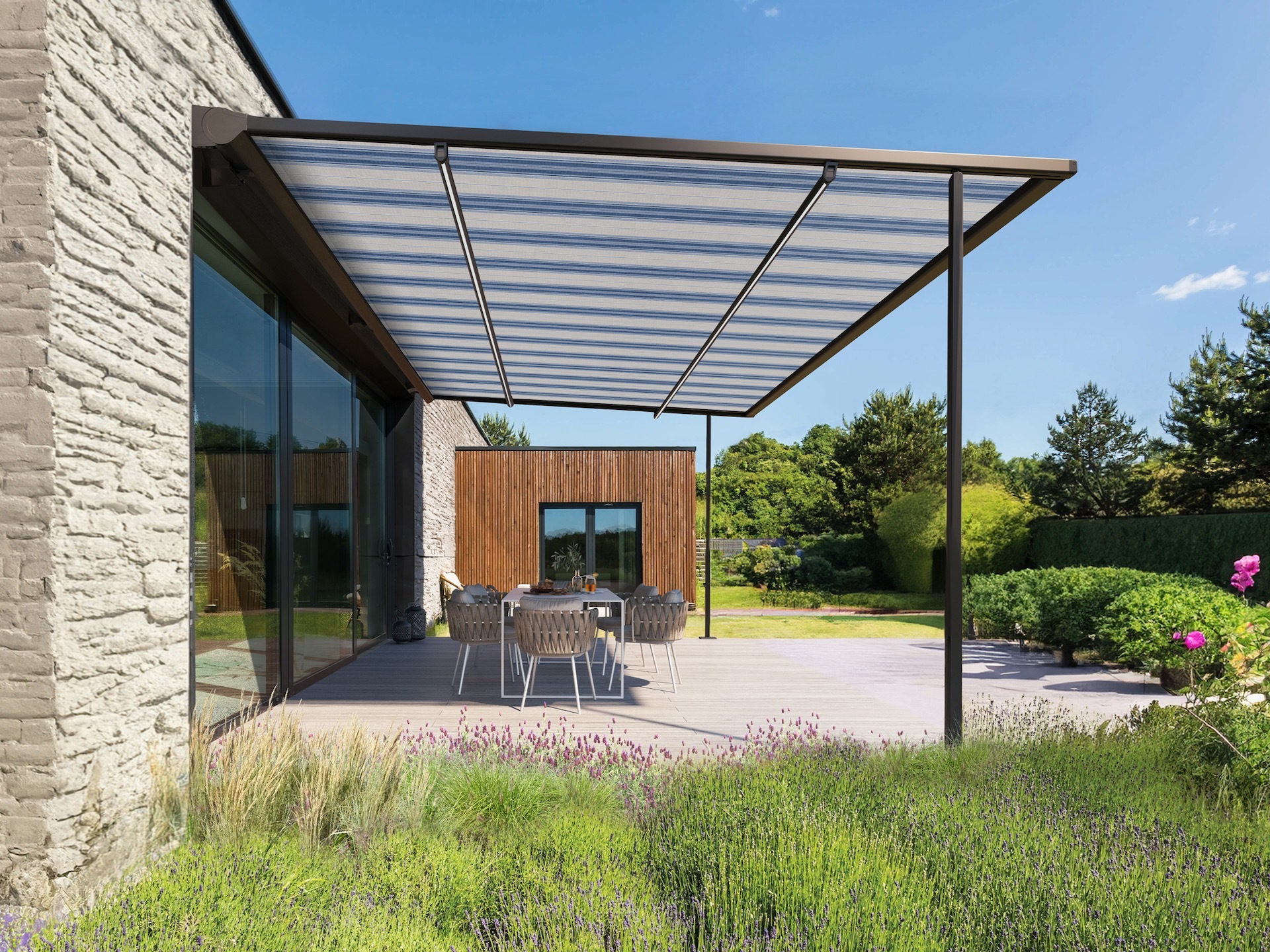
Thomas Sanderson Pergola Awning in Imperial Cobalt, starting from £5,856. Measuring and fitting included, motorisation and wind sensors as standard.
This pergola awning by Thomas Sanderson will provide much-needed shade both inside and outside through the summer, and it can block any glare from a low-lying sun in spring and autumn. It can also be retracted as needed.
5. Invest in some houseplants
It’s tempting to turn on a fan or open a window when a house is feeling stuffy. But if you’re looking for a natural way to keep a house cool, did you know that houseplants might be the answer? They cool the air through a process known as transpiration – when the atmosphere heats up, many plants release excess water into the air from their leaves, which then evaporates. This doesn’t just cool them down, it also cools the air around them – and, in turn, us.
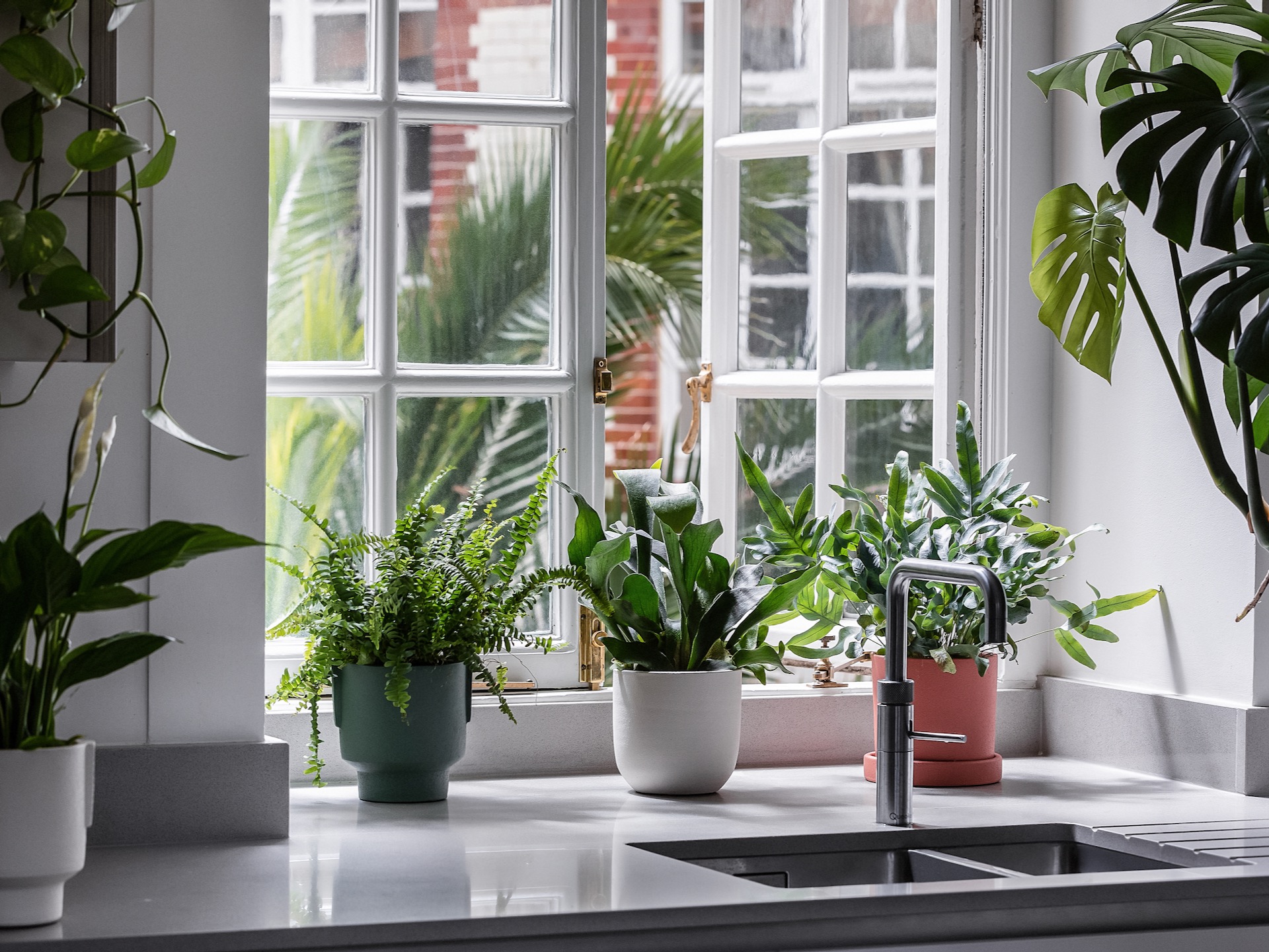
A trio of humidity-loving ferns by Leaf Envy
According to experts at The Joy of Plants, particularly effective ‘perspiring’ plants include the Ficus benjamina, which is also known as a weeping fig. “Opt for a tall trunk with a bushy top that could serve as a little forest canopy for other plants below or around it,” they recommend. You could also try the Ficus elastica, or rubber plant. “This houseplant is very effective in replenishing the moisture in the air,” they say. “The more foliage a plant has, and the bigger the leaves are, the more moisture it will release back into the air. Since they’re often varieties that thrive in humid environments, they will take in water through their roots, and then release moisture through the pores located on the underside of their leaves or fronds.”
6. Go Mediterranean with shutters
“Take a page out of the playbook of hot-weather regions and consider shutters for a cooler, more comfortable home,” advises Thomas Sanderson’s Abi Clewley. “Solid wood shutters, a staple in many Mediterranean homes for centuries, act like a physical barrier, blocking sunlight from entering your house in the first place. This prevents the heat from radiating into your interior spaces. The natural insulating properties of wood further enhance this effect, keeping the cool air inside and the hot air outside.”
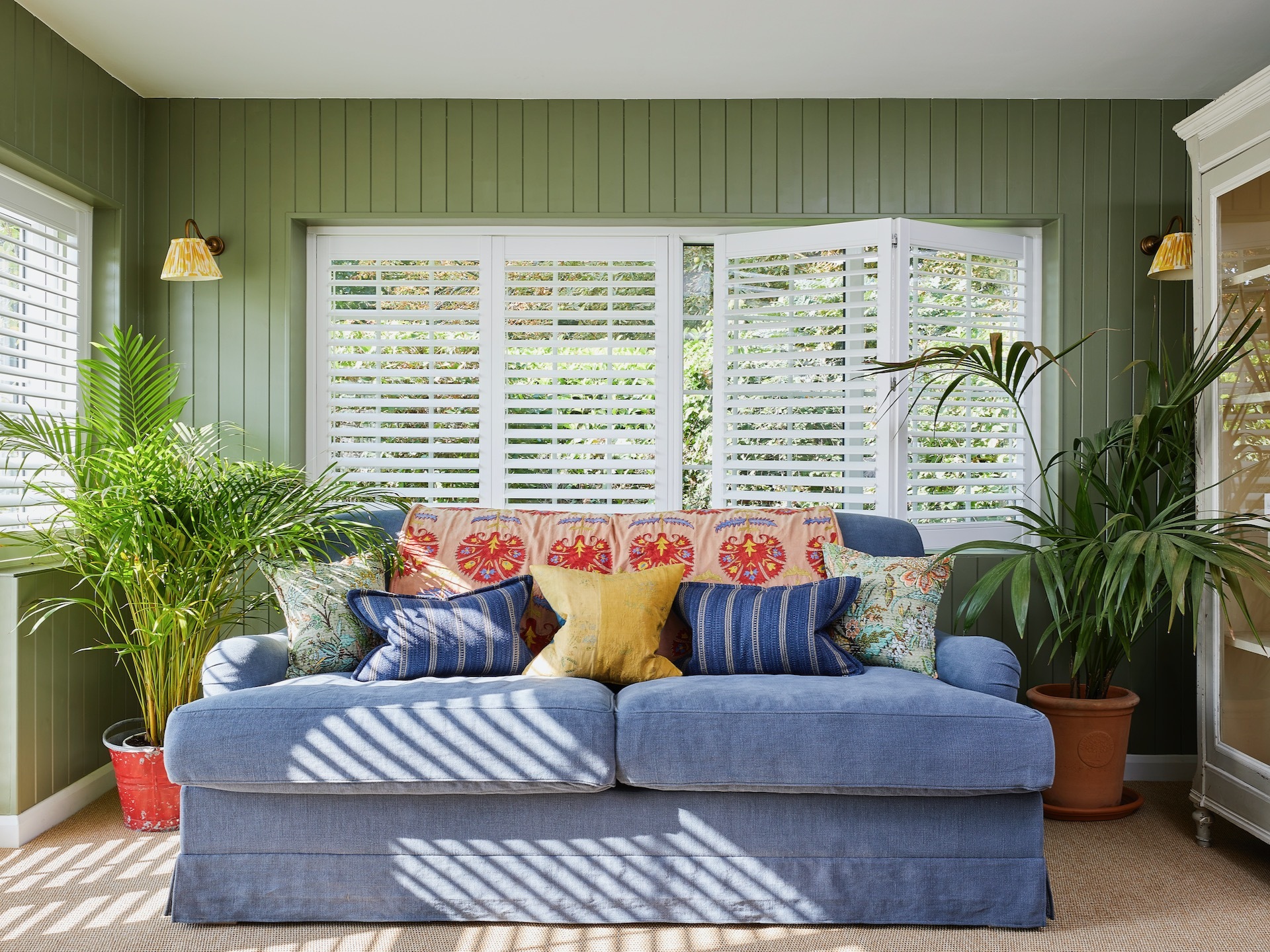
Waterbury vinyl shutters in Cotton White, Thomas Sanderson
If you can’t stretch to wood, vinyl is more affordable and still worth consideration. “They offer excellent insulation thanks to the material’s inherent properties. Plus you can adjust louvres to control airflow,” says Abi.
7. Create a water feature just outside
Architect Glen Thomas often uses this trick when designing homes, though it’s something that could easily be done as a garden renovation project, particularly if you have a living area that opens up onto the garden. “We often introduce shallow reflecting pools in internal courtyards and back gardens, which work well with our Passivhaus design philosophy,” he explains. “The idea is that air comes in over the water, bringing moisture content and coolness with it, therefore creating natural ventilation and air conditioning.”
Kevin McCloud has also spoken about the virtues of a pond to keep your home cool.
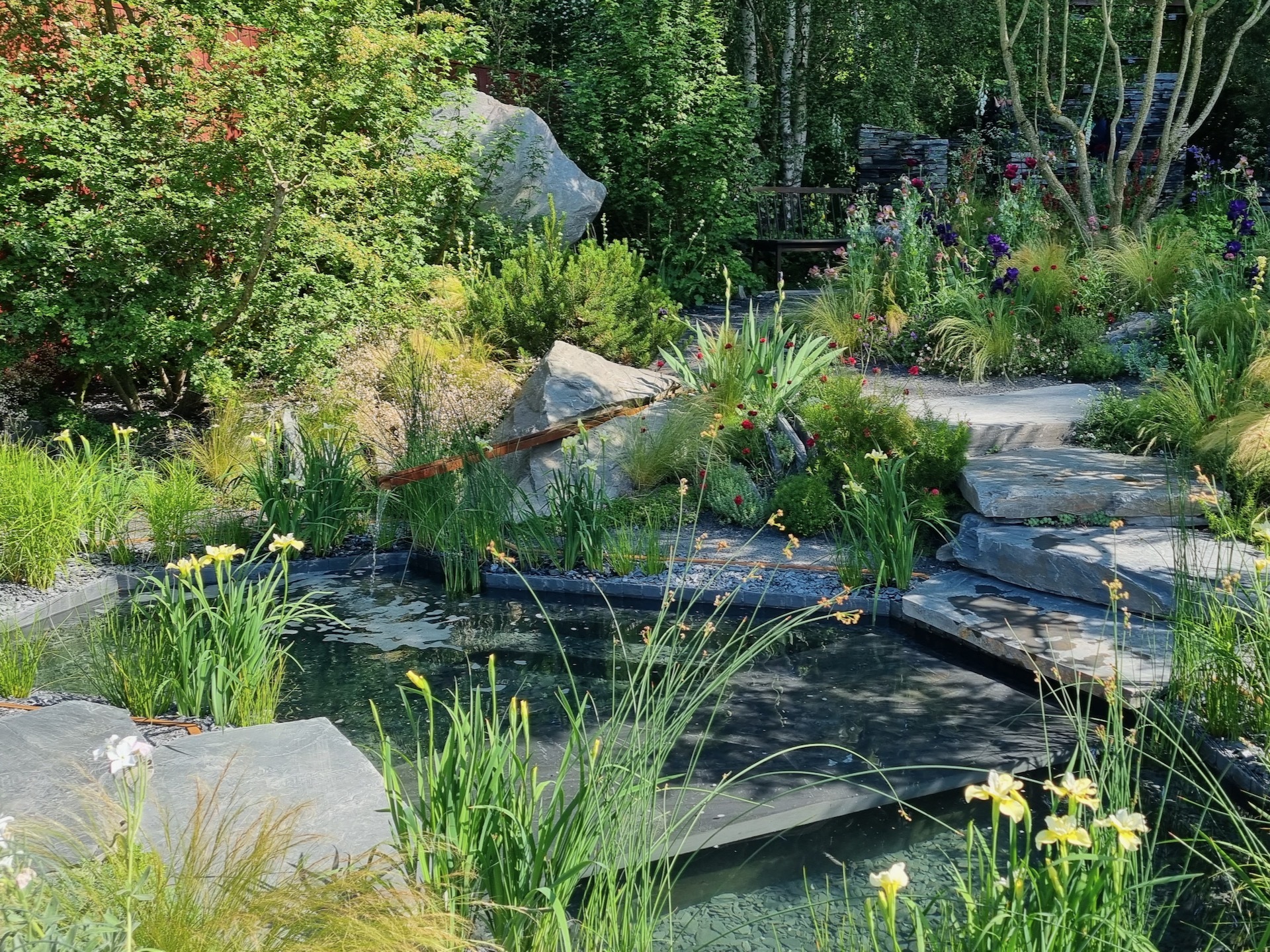
Creating a pool like this just outside sliding or bifold doors could help to cool rooms inside. Image credit: Amy Cutmore
He combines this with the use of natural materials such as stone flooring, which has a high rate of heat conductivity. This means it will immediately transfer heat away from hot bare feet, making you feel cooler.
8. Fit an AC unit
Air conditioning is a staple in warmer climes, but the UK’s temperate weather means it’s traditionally not considered essential in most homes. But as global temperatures rise, that may be about to change – a trend reflected in the growing number of air con options available.
According to Checkatrade, a 12,000 BTU wall-mounted unit, capable of cooling an average-sized room, costs anywhere between £618 and £890, plus £904 to £1,302 for installation. A more discrete ducted fan can cost in excess of £1,000 for the unit.
If you’re toying with the idea of an AC unit but aren’t sure which rooms need it, try a portable option. The De’Longhi Pinguino Extreme Portable Air Conditioner, £769.99, cools spaces up to 700 square feet without the need for permanent installation. Its quiet enough to run in a bedroom, but has built-in handles and castor wheels so you can move it from room to room, providing targeted cooling where its needed.

